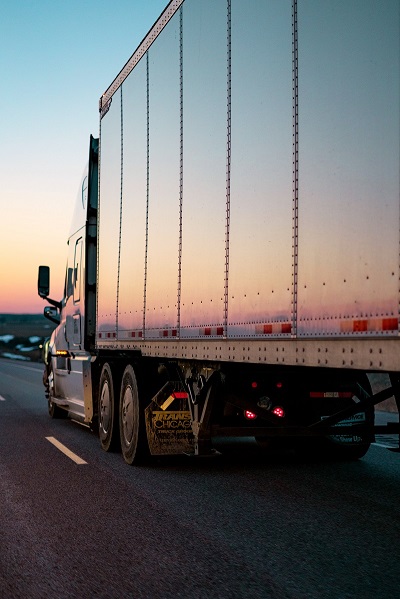Maximizing Efficiency: The Art of Transportation Network Optimization


In today’s fast-paced world, transportation networks are the arteries of modern economies, facilitating the flow of goods, services, and people across regions. As urbanization increases and the demand for efficient, reliable transportation systems grows, optimizing these networks becomes crucial. Transportation network optimization refers to improving transportation systems’ efficiency, reliability, and sustainability. This article explores the key aspects of transportation network optimization, its significance, and the strategies used to achieve it.
The Importance of Transportation Network Optimization
Efficient transportation networks are vital for economic growth and societal well-being. They ensure that goods are delivered on time, people can commute easily, and businesses can operate smoothly. However, with optimization, transportation networks can become efficient, leading to congestion, increased travel times, higher fuel consumption, and environmental pollution.
Optimization enhances transportation networks’ performance and reduces operational costs and environmental impact. In an era of key concern for sustainability, optimizing transportation networks helps reduce carbon emissions and energy consumption, contributing to greener cities and healthier communities.
Key Strategies for Transportation Network Optimization
Data-Driven Decision Making
One of the most critical elements of transportation network optimization is leveraging data. With big data and advanced analytics, transportation planners can now collect, analyze, and utilize vast amounts of data to make informed decisions. GPS, sensors, traffic cameras, and mobile devices provide real-time insights into traffic patterns, congestion points, and travel times.
Using this data, algorithms can predict traffic flow, identify bottlenecks, and suggest alternative routes or times for travel. This data-driven approach allows for more accurate and dynamic optimization of transportation networks, ensuring that resources are allocated efficiently and traffic congestion is minimized.
Integration of Transportation Modes
A well-optimized transportation network integrates various modes of transport, such as buses, trains, bicycles, and pedestrian paths, into a cohesive system. This multimodal approach allows for seamless transitions between different types of transportation, reducing the dependency on any single mode and improving overall efficiency.
For instance, in cities with integrated public transportation systems, passengers can easily switch from a bus to a train or bicycle, reducing travel time and road congestion. Integration also promotes sustainable transport options like cycling and walking, contributing to a healthier and more environmentally friendly transportation network.
Intelligent Transportation Systems (ITS)
Intelligent Transportation Systems (ITS) are technologies that improve the efficiency and safety of transportation networks. These systems include traffic management centers, adaptive traffic signals, electronic toll collection, and real-time traffic information services. ITS technologies use data and communication systems to monitor and manage traffic flow, reducing congestion and improving travel times.
For example, adaptive traffic signals can adjust the timing of lights based on real-time traffic conditions, reducing wait times and preventing bottlenecks. Similarly, electronic toll collection systems allow vehicles to pass through toll booths without stopping, reducing delays and improving the overall traffic flow.
Infrastructure Upgrades and Maintenance
Optimizing transportation networks also involves investing in infrastructure upgrades and regular maintenance. Aging infrastructure can lead to inefficiencies, increased maintenance costs, and safety hazards. Transportation networks can efficiently handle higher traffic volumes by upgrading roads, bridges, and tunnels.
Regular maintenance is equally important to prevent the deterioration of infrastructure. Well-maintained roads and bridges reduce the risk of accidents and the need for costly repairs. Investing in modern infrastructure, such as high-speed rail and electric vehicle charging stations, also contributes to the long-term optimization of transportation networks.
Public Engagement and Policy Support
Successful transportation network optimization requires public support and effective policy frameworks. Engaging with the community to understand their needs and preferences ensures that optimization efforts align with the expectations of the people who use the transportation network. Public participation in planning can lead to more equitable and user-friendly transportation systems.
Policy support is also crucial for implementing optimization strategies. Governments play a key role in setting regulations, providing funding, and promoting sustainable transport options. Policies that encourage public transport, cycling, and carpooling can significantly reduce congestion and improve the efficiency of transportation networks.
Challenges in Transportation Network Optimization
Despite the benefits, optimizing transportation networks is challenging. One of the primary challenges is the complexity of modern transportation systems. With multiple modes of transport, varying traffic conditions, and diverse user needs, developing a one-size-fits-all solution is nearly impossible. Planners must navigate these complexities to design flexible and adaptable solutions.
Another challenge is the cost associated with implementing optimization strategies. Infrastructure upgrades, technology integration, and data analytics require significant investment. Securing funding and ensuring that the benefits outweigh the costs is critical for transportation network optimization.
Moreover, resistance to change can hinder optimization efforts. People and businesses may be reluctant to adopt new transportation methods or technologies, especially if they require changes in behavior or involve initial inconvenience. Effective communication and demonstrating the long-term benefits of optimization are essential to overcoming this resistance.
The Future of Transportation Network Optimization
As technology continues to evolve, the future of transportation network optimization looks promising. Advances in artificial intelligence (AI) and machine learning will enable more sophisticated and predictive optimization models. Autonomous vehicles, smart infrastructure, and the Internet of Things (IoT) will further enhance the ability to manage and optimize transportation networks in real-time.
Sustainability will also play a more prominent role in future optimization efforts. As cities strive to reduce carbon footprint, transportation networks must be designed sustainably. This includes promoting electric vehicles, expanding public transport, and creating pedestrian-friendly urban spaces.
Transportation network optimization is vital to modern urban planning. By embracing data-driven decision-making, integrating transportation modes, adopting intelligent systems, upgrading infrastructure, and engaging the public, cities can create efficient, sustainable, and resilient transportation networks that meet the needs of their populations today and in the future.
